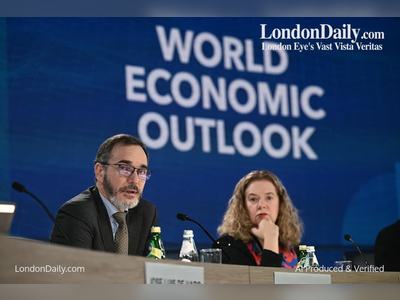
Defra Engages Major Landowners in Nature Restoration Initiative
Environment Secretary calls for collaborative plans to enhance biodiversity across English estates.
On Thursday, Steve Reed, the Secretary of State for Environment, Food and Rural Affairs (Defra), convened a meeting with some of England's largest landowners, including representatives from the royal family and prominent environmental organisations, to formulate strategies aimed at restoring nature across their estates.
Key attendees included representatives for King Charles and Prince William, along with major landholding entities such as the National Trust, the Royal Society for the Protection of Birds (RSPB), and various branches of the government including the Ministry of Defence and Natural England.
The assembly, termed the "National Estate for Nature," oversees approximately 10% of England’s land area, thereby positioning them as vital stakeholders in the delivery of legally binding targets set forth in the Environment Act.
Reed emphasized the necessity for these landowners to establish actionable management plans to foster environmental restoration, stating that the group should set minimum standards that incorporate specific milestones for the enhancement and protection of nature.
Current statistics reveal that only 8% of England's land and sea is designated as protected for nature, with a government objective aiming to increase this to 30% by 2030. However, some wildlife advocates contend that the proportion of land that is effectively safeguarded for nature is even lower, estimated at merely 2.93%.
The ongoing decline of wildlife has been underscored by annual reductions in wild bird populations, while the 2023 state of nature report categorizes the United Kingdom as one of the most nature-depleted regions globally, based on declines observed since the 1970s.
In response to these challenges, the current Labour government has taken steps to intensify conservation efforts, including the recent legalization of the wild release of beavers and the introduction of a land use framework designed to optimise land utility for both agricultural output and ecological preservation.
Guy Shrubsole, an environmental campaigner, articulated the expectation that major landholders, such as the Forestry Commission and the crown estate, which collectively manage millions of acres, should initiate restoration of the severely damaged habitats under their supervision.
He advocated for greater transparency, urging that landowners publicly disclose their nature protection plans to enable public scrutiny and hold them accountable to their commitments.
Shrubsole further suggested a review of existing legal obligations of public entities to prioritize ecosystem restoration and mitigation of climate impacts.
Harry Bowell, director of land and nature at the National Trust, welcomed the initiative, noting that the Trust’s stewardship of 250,000 hectares positions it in a critical role in these discussions.
Bowell acknowledged the necessity for transformative changes in land use to meet biodiversity and climate targets, reinforcing the significant influence and accountability that large landowners bear in this process.
Plans are underway for further quarterly meetings intended to focus on the creation and implementation of actionable agreements for enhancing biodiversity across the identified landscapes.
Key attendees included representatives for King Charles and Prince William, along with major landholding entities such as the National Trust, the Royal Society for the Protection of Birds (RSPB), and various branches of the government including the Ministry of Defence and Natural England.
The assembly, termed the "National Estate for Nature," oversees approximately 10% of England’s land area, thereby positioning them as vital stakeholders in the delivery of legally binding targets set forth in the Environment Act.
Reed emphasized the necessity for these landowners to establish actionable management plans to foster environmental restoration, stating that the group should set minimum standards that incorporate specific milestones for the enhancement and protection of nature.
Current statistics reveal that only 8% of England's land and sea is designated as protected for nature, with a government objective aiming to increase this to 30% by 2030. However, some wildlife advocates contend that the proportion of land that is effectively safeguarded for nature is even lower, estimated at merely 2.93%.
The ongoing decline of wildlife has been underscored by annual reductions in wild bird populations, while the 2023 state of nature report categorizes the United Kingdom as one of the most nature-depleted regions globally, based on declines observed since the 1970s.
In response to these challenges, the current Labour government has taken steps to intensify conservation efforts, including the recent legalization of the wild release of beavers and the introduction of a land use framework designed to optimise land utility for both agricultural output and ecological preservation.
Guy Shrubsole, an environmental campaigner, articulated the expectation that major landholders, such as the Forestry Commission and the crown estate, which collectively manage millions of acres, should initiate restoration of the severely damaged habitats under their supervision.
He advocated for greater transparency, urging that landowners publicly disclose their nature protection plans to enable public scrutiny and hold them accountable to their commitments.
Shrubsole further suggested a review of existing legal obligations of public entities to prioritize ecosystem restoration and mitigation of climate impacts.
Harry Bowell, director of land and nature at the National Trust, welcomed the initiative, noting that the Trust’s stewardship of 250,000 hectares positions it in a critical role in these discussions.
Bowell acknowledged the necessity for transformative changes in land use to meet biodiversity and climate targets, reinforcing the significant influence and accountability that large landowners bear in this process.
Plans are underway for further quarterly meetings intended to focus on the creation and implementation of actionable agreements for enhancing biodiversity across the identified landscapes.









